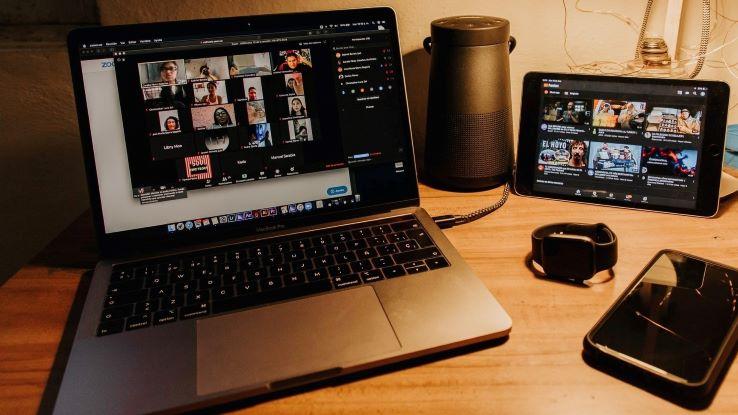What Tools Do I Need to Work From Home Successfully?

Working from home has been steadily on the rise since even before COVID-19 struck, with ever larger numbers of workers creating new office spaces for themselves at home. Research shows that remote work increased by 159 percent between 2005 and 2017, and it has continued gaining traction in the years since.
Having a dedicated space is essential for succeeding in working from home. While it can be either a quiet corner of a larger space in your home or a separate room with a door, wherever it is, it should be as free from distractions as possible. Additionally, having the right tools on hand will help you actually get the job done. We’ve rounded up five of the most essential tools to help get you started.
A Computer
To work from home efficiently, you need the right computer and a high-speed internet connection. While a laptop provided by your employer is ideal, you may have to figure out your own accommodations. That may mean making do with whatever’s at hand at first, but eventually, you’re going to want to invest in a computer that’s well-suited to working from home. To do that, you need to first decide between a desktop and a laptop. Desktops take up more space, but they’re typically more cost-effective and offer better performance. Laptops, however, give you greater freedom and mobility. If you enjoy working at cafes and other places outside the home or need to travel a lot, a laptop may be best. If you need to run programs that require a lot of processing power, however, a desktop is likely best.

Phone System
One key hurdle in working from home is staying in touch with your co-workers. If you’re looking to take your work-from-home office to the next level, CIO magazine recommends a voice-over-internet-protocol (VoIP) phone system like Ooma Business. It allows you to hold conference calls and more over the Internet rather than a phone line, and you can even take your number with you if you move. The system works practically anywhere, and calls are typically free of charge.

A Comfortable Desk Chair
While you can work from your couch or even bed with a remote job, that doesn’t mean they’re the best spots to get things done. Without the right work posture and environment, you could end up being less productive. Worse, you could develop back and neck pain as a result of the strain. To set yourself up right, you need to pay attention to ergonomics, and that starts with choosing the right desk chair.

Start by considering factors like the dimensions of the chair. Ideally, you want a chair with an adjustable height between 16 and 21 inches off the floor. Back support, particularly in the lumbar area, is also important.
Task Management Systems
If your company has you working from home, they’ve hopefully also given you access to ― or recommendations for ― task management systems. These programs help you not only organize everything on your to-do list, but also coordinate with co-workers remotely. For instance, Trello is a task management system that lets you compile assignment boards and designate tasks for each day of the week, while Google Drive lets you remotely share your work on joint projects with your supervisor or teammates seamlessly.

Teleconferencing Capabilities
Just because you’re not working in the office doesn’t mean you can’t get together virtually for meetings, training and special projects. If you’re in it for the long haul, investing in a videoconferencing system could be the right move. The Aver VC 520, for instance, comes with a sensitive microphone and zoom-and-pan capabilities to help you make a good impression and fully participate in meetings. If you want to minimize your monetary outlay, apps like Zoom provide teleconferencing capabilities as well and aren’t too expensive.






